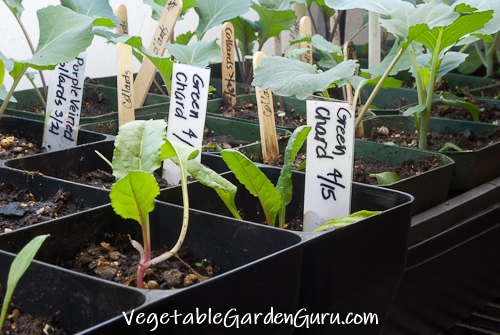| Back to Back Issues Page |
 |
|
Under the Arbor January 21, 2022 |
~ Resist the Urge to Start Your Seeds TOO Early ~I LOVE browsing the seed catalogs this time of year and making plans, and even though I always have to scale back at the end, it's wonderful fun to plan my dream gardens on these cold icy days. This month I want to encourage you to plan, but not to start seedlings indoors too early. Why?
Plants have innate intelligence, and while they may not be solving be math problems (but who knows, maybe they are!) ~ they do register soil and air temperature, sun intensity, day length (or night length), and water and nutrient availability. They also manage to communicate with one another and with fungi, and somehow run all this data through some inner algorithm and determine their own growth "plan" according to conditions. Soil TemperatureMost of us start our seedlings indoors under lights inside our warm, comfy houses, while the soil outside is still cold. But when it comes time to transplant them out, if we put them into chilly soil, the feedback the seedlings get from the environment tells them it's not safe to grow yet and they will abruptly shut down their growing process.Plants change strategies slowly, and once they shut down it will take a long time for them to fire back up ~ much longer, in fact, than if we had just waited to plant them out until the soil was nice and warm. (See below for how warm) Root Development vs. Root DamageWhat we want to achieve is strong, deep, healthy root systems, which are one of primary determinants of eventual yield as well as nutritional quality. Starting seedlings too early and then having to keep them in pots too long also creates problems.If grown in pots too long, the roots reach the sides of the pot and then start circling around. Reaching this "hard limit" on all sides can trigger the plant into flowering and setting fruit, because it "thinks" its roots can't develop any further and it's going to die, so it had better make at least a few seeds before it does so. Some people intentionally seek out those 2"x2" potted seedlings from the store that already have little tomatoes on them, thinking their presence means an early harvest. But like a 6-month-old pregnant kitten that gives all its energy to producing its offspring, that seedling will never grow to full size or reach its full genetic potential. So the timing of starting seeds indoors is critical. We want to time it so that the root tips grow till they just touch the edge of the pot. This stage is ideal for transplant, because the roots hold the soil together but have not yet started circling. If they're at this stage but the soil still isn't warm enough, you'll need to pot them up into a slightly larger pot. If you put them in too large a pot, when you go to plant them out the loose soil around the edges will fall away, taking delicate feeder roots with it. It takes a very long time for plants to recover from this kind of fine root damage, and some plants, like peppers, never fully recover. Another problem with starting seedlings too early is that they tend to get spindly. We want stocky, bushy plants with strong, well-established root systems when they are planted out. A good rule of thumb is to plant out cool-season transplants like kale, chard, head lettuce, leeks and onions after the soil is at least 50 degrees F. Plant out warm-season transplants like peppers and tomatoes after the soil is at least 65-70 degrees F. And of course, don't start squashes or cucumbers indoors at all, but wait until the soil is really warm - at least 80 degrees F - and then direct seed them in the ground. I know it's hard to wait, but your yields will be much higher and earlier if you are patient. It pays to wait!
How to Figure Your Indoor Seed-Starting DateEasy-peasy: use the free Johnny's Seed-Starting Date Calculator If experience has taught me anything, it is to be very patient, maybe even starting things a week later than recommended. My farmer hero Dan Kittredge starts his seedlings later than his farmer neighbors, but by mid-season his yields are higher and his season extends longer into the fall because his plants have such deep root systems that they are much more resilient.Here's to a productive and happy 2022!
|
| Back to Back Issues Page |

